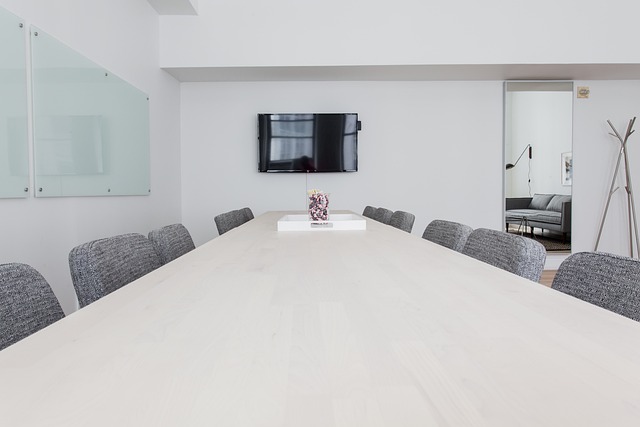Embark on a verdant journey through the realm of office productivity and wellness with the transformative power of flowerpots. As you navigate the bustling corridors of your workday, let the lush greenery within these containers infuse your space with life, enhancing not just the ambiance but also your mental health and efficiency. This article delves into the multifaceted benefits of incorporating low-maintenance office plants into your workspace, offering creative ideas for integrating flowerpots into your office design, and providing guidance on selecting the perfect pot to complement your décor. From the top five plants that can brighten up your office to the innovative ways to maximize small spaces with stylish flowerpots, we explore how these botanical companions can elevate your work environment. We’ll also weigh the pros and cons of real versus artificial plants, offer essential care tips for a thriving office flora, and show you how to elegantly transform your desk into a green oasis. Join us as we examine the impact of indoor greenery on office wellness and mood, and discover the most beneficial choice for your professional sanctuary.
- Enhancing Productivity Through Plant Life: The Role of Flowerpots in Office Settings
- Low-Maintenance Plants for Busy Offices: Top Picks for Flowerpots
- Flowerpot Innovations in Office Design: Creative Uses and Ideas
- Selecting the Ideal Flowerpot to Complement Your Office Aesthetic
- The Impact of Indoor Greenery on Office Wellness and Mood
- Maximizing Space with Stylish Office Flowerpots
- Flowerpots or Fakes: Analyzing the Pros and Cons for Offices
Enhancing Productivity Through Plant Life: The Role of Flowerpots in Office Settings
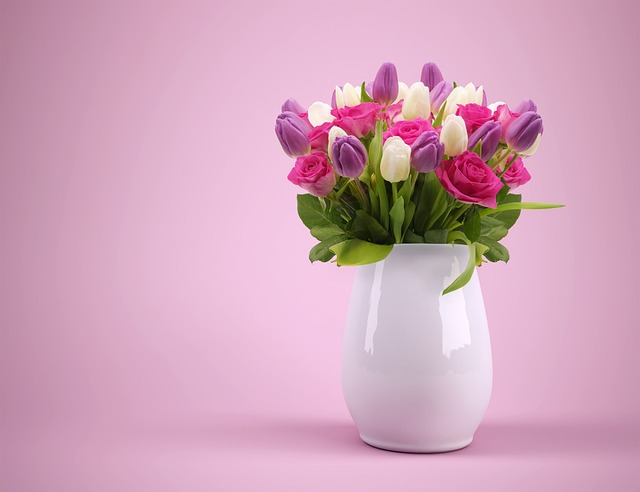
Incorporating flowerpots into office settings can significantly enhance productivity by introducing a calming, natural element to the work environment. Numerous studies have shown that plants can reduce stress and anxiety, which in turn can improve concentration and cognitive function among employees. The presence of greenery within view or within arm’s reach offers a subtle yet consistent reminder of nature, fostering a sense of connection and well-being that is conducive to sustained attention and mental clarity. Office workers surrounded by plants have reported feeling more at ease, which can lead to fewer distractions and a more focused state of mind.
Selecting the right flowerpots for an office space not only complements the existing décor but also contributes to a harmonious and productive atmosphere. The aesthetic appeal of a well-maintained plant in a stylish pot can elevate the ambiance, making the workspace more inviting and comfortable. Choosing pots that align with the office’s color scheme or theme can create a cohesive and professional look that encourages productivity. Moreover, low-maintenance plants in these containers require minimal attention yet still deliver the myriad benefits associated with indoor greenery. This balance between visual appeal, ease of care, and positive psychological impact makes flowerpots an excellent choice for enhancing productivity and wellness in the office environment.
Low-Maintenance Plants for Busy Offices: Top Picks for Flowerpots
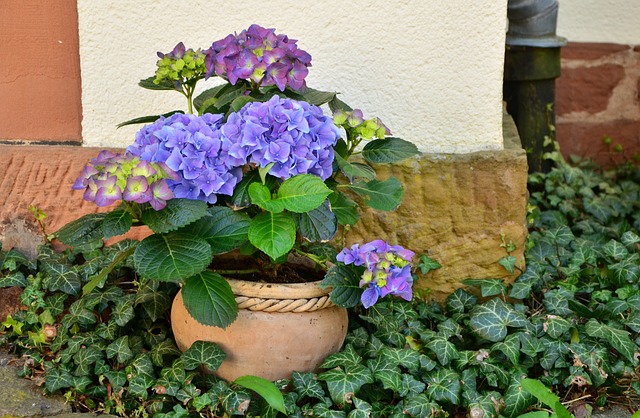
When selecting low-maintenance plants for busy offices, it’s crucial to opt for species that can thrive with minimal care and attention. Plants like ZZ Plant (Zamioculcas zamiifolia) and Snake Plant (Sansevieria spp.) are ideal due to their resilience and ability to survive in less-than-ideal conditions, including low light and occasional watering. These plants not only purify the air but also add a touch of greenery that can significantly enhance the aesthetic of any office space. Another excellent choice is the Pothos (Epipremnum aureum), which comes in various varieties and is known for its trailing foliage that can adapt to different pot sizes, making it versatile for various desk spaces. The Peace Lily (Spathiphyllum spp.) is another good option; its glossy leaves and occasional blooms provide a pop of color and can brighten up the office ambiance without demanding too much care. All these plants are well-suited for the typical office environment, ensuring that even the busiest employees can maintain a thriving plant life without much hassle. Additionally, incorporating these plants into the workspace has been shown to improve focus, reduce stress, and enhance overall wellbeing, making them an invaluable addition to any office design.
Flowerpot Innovations in Office Design: Creative Uses and Ideas

Integrating flowerpots into office design has evolved beyond merely placing plants on desks. Innovations in office floral decor have led to creative and functional uses that not only enhance aesthetics but also contribute to a healthier and more productive work environment. One such innovation is the use of vertical gardens, where wall-mounted planters create lush living murals that purify the air and add a touch of nature’s beauty to the otherwise linear and geometric office spaces. These vertical gardens are particularly effective in small or open-plan offices, maximizing space while offering visual and psychological benefits.
Another trend is the incorporation of biophilic design principles, which aim to connect occupants with natural elements. Flowerpots equipped with smart technology can automate watering and light exposure based on plant needs and environmental conditions, ensuring that office greenery remains vibrant without demanding much attention from busy employees. Additionally, some offices are opting for modular and mobile planters, allowing for flexibility in layout and the ability to adapt as office needs change. These mobile units can be easily moved or reconfigured to create dynamic focal points that foster collaboration and social interaction among staff. Whether through vertical gardens, smart technology, or movable units, flowerpots are becoming a versatile tool in the designer’s kit for creating offices that are not only aesthetically pleasing but also conducive to wellness and productivity.
Selecting the Ideal Flowerpot to Complement Your Office Aesthetic
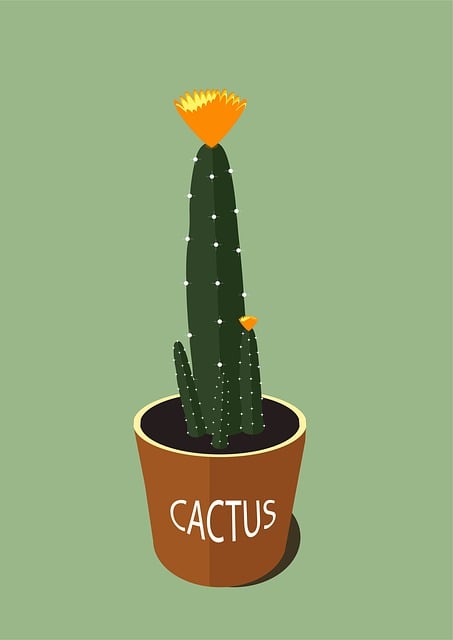
When selecting a flowerpot to complement your office aesthetic, it’s important to consider both the visual and functional aspects that will enhance your work environment. The ideal flowerpot should align with the decor of your space, whether it’s modern, minimalist, traditional, or eclectic. For a contemporary setting, opt for sleek, geometric shapes in neutral tones like black, white, or metallic finishes. These can seamlessly blend with clean-lined furniture and accentuate a modern vibe. In contrast, if your office has a warm and inviting atmosphere, terracotta pots or those with wooden accents might be more fitting, as they bring an element of nature indoors and complement cozier spaces.
Size is another crucial factor; ensure the pot is proportional to the plant and has enough space for roots to grow without overwhelming your desk. Consider the placement of the flowerpot too. A small, stylish pot on a windowsill can bask in natural light, while a larger one on the floor can serve as a statement piece or a room divider. Additionally, choose pots with drainage holes to prevent water damage and maintain the health of your plants. The material also plays a role in maintenance; ceramic or plastic pots are durable and easy to clean, while terracotta breathes well but may require more care. By thoughtfully selecting a flowerpot that complements both your personal taste and office design, you can create a serene and productive environment that promotes wellness and encourages creativity.
The Impact of Indoor Greenery on Office Wellness and Mood
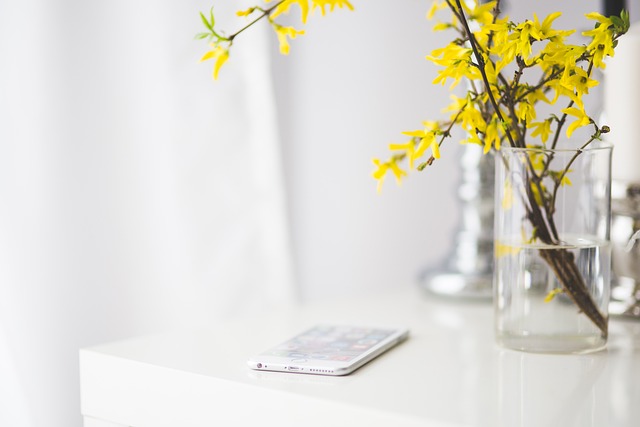
Introducing indoor greenery into office spaces has been shown to significantly enhance wellness and mood among occupants. Plants serve as natural air purifiers, removing toxins and replacing them with oxygen, thereby improving indoor air quality and creating a healthier environment. This subtle yet impactful change can lead to improved cognitive function, reduced stress levels, and a general sense of rejuvenation for employees. The presence of plants introduces elements of nature into the workspace, which studies have linked to increased productivity and creativity. Moreover, the visual appeal of flowers and foliage contributes to a more aesthetically pleasing office, which can positively influence employee morale and satisfaction with their work environment.
The psychological benefits of plants in the office are manifold. They not only act as a calming presence but also serve as conversation starters, fostering a sense of community and collaboration among colleagues. The act of caring for plants can provide employees with a momentary respite from their tasks, allowing them to engage in a restorative activity that breaks up the workday and offers a brief mental reset. Additionally, the maintenance of office greenery can be an inclusive task that brings team members together, promoting social interaction and collective responsibility for the well-being of the shared space. This holistic approach to office design, where plants are integrated into the daily routine, can create a more harmonious and supportive atmosphere that contributes to overall wellness and productivity.
Maximizing Space with Stylish Office Flowerpots
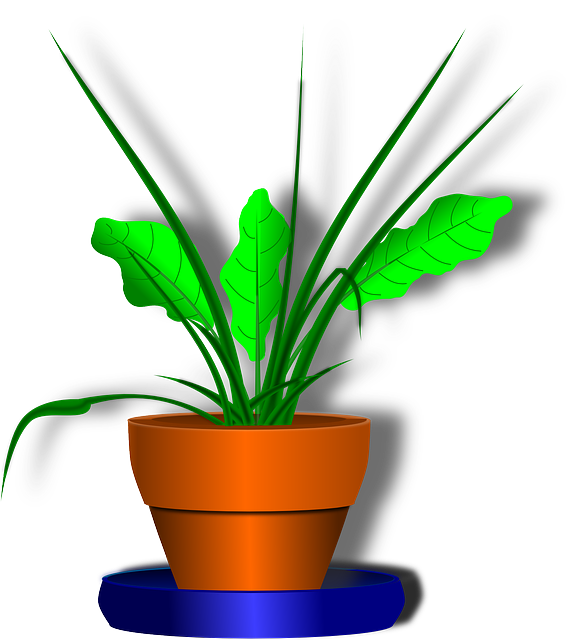
Incorporating stylish office flowerpots into your workspace can significantly enhance both productivity and wellness. As offices become more aware of the need for a harmonious environment, plants serve as a subtle yet impactful element that brings life to the otherwise stark setting of a cubicle or office desk. When space is at a premium, vertical gardens or hanging planters offer innovative solutions for maximizing vertical space, allowing even the smallest offices to benefit from the presence of greenery. These vertical options not only optimize limited areas but also add an aesthetic touch that can elevate the entire office ambiance. Choosing the right flowerpots that complement your office décor is essential for maintaining a professional and cohesive look while reaping the psychological benefits plants provide, such as reduced stress and increased focus. Strategically placed flowerpots with low-maintenance plants can transform a mundane workspace into an oasis of tranquility, fostering an environment conducive to creativity and productivity. Whether opting for succulents that thrive with minimal care or lush ferns that add a touch of nature’s elegance, the key is selecting plants and pots that resonate with your personal taste and office culture, ensuring that every square inch of your workspace contributes to a more vibrant and efficient workday.
Flowerpots or Fakes: Analyzing the Pros and Cons for Offices

Incorporating flowerpots into office spaces offers a myriad of benefits that extend beyond mere aesthetics. Natural greenery can purify the air, remove toxins, and enhance the quality of indoor environments. Live plants contribute to a calming atmosphere, potentially reducing stress and fostering a sense of well-being among employees. They serve as natural dividers, subtly delineating office zones without the formality of partitions. On the other hand, artificial plants, while low-maintenance and consistent in appearance, lack the living qualities that real plants provide. They do not contribute to air purification nor do they respond to human interaction, which some studies suggest can improve mood and productivity. Additionally, artificial plants may give the impression of neglect if not meticulously maintained, potentially having a negative impact on the office ambiance.
Choosing between real and artificial plants should be based on the specific needs and capabilities of the office environment. Real flowerpots require a commitment to watering, fertilizing, and possibly pruning, depending on the plant species. However, the effort is often minimal for certain low-maintenance varieties, making them an accessible choice for busy workplaces. Artificial plants, while they avoid the upkeep of real ones, might not fully replicate the benefits of live greenery. Ultimately, the decision may also be influenced by the office’s light conditions, budget, and the collective preferences of its occupants. The key is to strike a balance that maintains the office’s productivity while creating a healthy and inviting space.
